The city lights washed over the theater walls that July night in 2008.
You could feel the air change when the Warner Bros. logo faded and the screen turned that cold blue. The Dark Knight was more than a summer movie, it was an event. The crowd fell quiet before the first line. Then the bank heist started and the room held its breath.

Back then superhero films were mostly loud, fun, and a little silly.
Christopher Nolan did something different. He took out the jokes, leaned into grit, and gave us a Batman that felt lived in and dangerous. That then versus now split still stings. Before The Dark Knight, comic book movies were primarily popcorn. After it, people started talking about them like serious cinema.
It mattered because of how we watched it.
We lined up at midnight. We traded rumors in the lobby. We left the theater talking in that low, stunned way you do after you have just seen something that sticks. Heath Ledger’s Joker gave us a chill we didn’t expect. Hans Zimmer’s score vibrated in our chests. The Batpod sounded like thunder rolling past a quiet street.
This piece is a walk-through of those moments. Memory first, facts close behind. If you remember where you were when Gotham went dark, you already know why.
Lines wrapped around theater corners, people clutching sodas and talking about the trailer they’d watched a hundred times on YouTube. You could hear that low hum of excitement that only happens before a movie everyone knows is about to change things.

When the lights dimmed and the Warner Bros. logo shimmered across the screen, the chatter died fast. That deep hum from Hans Zimmer’s score rolled through the room like thunder building somewhere behind you.
The opening scene hit hard. A perfect blue skyline, masked robbers, the slow pullback that showed Gotham wasn’t just a city—it was a world. You could almost feel the cool of the IMAX air as the first window shattered.
This was July 2008, when midnight premieres felt like mini-festivals. Fans showed up in makeshift Batman cowls or smeared white face paint. Everyone knew Heath Ledger’s Joker was waiting somewhere in the dark, and no one was ready for how chilling that first “Whatever doesn’t kill you…” line would sound in surround sound.
That weekend broke records. Over 9,000 screens lit up with Gotham’s chaos, and The Dark Knight took in more than $158 million in three days. But for most of us, the number didn’t matter.
What stayed was the silence right after the credits rolled, when everyone just sat there, trying to take in what they’d seen.
Nolan used IMAX cameras to make scale feel immediate.
Scenes did not float on a digital sky. The bank, the rooftops, the Batpod chase all felt tactile. You leaned into the screen because the film pulled you forward.
Most stunts were practical. The truck flipped for real. The hospital explosion was built on a set. That made danger feel physical, not virtual. You could almost smell the smoke and hear metal bending.
Nolan filmed on location in Chicago and Hong Kong.
The real streets gave the film texture. Light and shadow did the work CGI usually does. The result was a Batman movie that felt like a crime drama, raw and close.

In Nolan’s script he is steady rather than changing, the anchor to a story built around Harvey Dent and the Joker. That stillness makes his choices heavier. Here Batman is less comic-book symbol and more a worn, tactical presence who carries the city’s moral weight.
Nolan’s Batman is closer to the grim, methodical detective from 1980s comics than to the theatrical 1989 Keaton-era caped showman. He is also less a tragic origin story than the brooding action figure Christian Bale played in Batman Begins.
That comparison helps explain why the film feels like crime drama first and superhero movie second.

Photo Credit: Wikipedia
He built the voice and the posture in a month of isolation and kept a “Joker diary” to shape the character, giving the role an improvisatory edge that felt spontaneous on screen.
Ledger drew on chaotic, punk influences and on unsettling screen villains to shape a figure who was equal parts prank and pure threat. His performance shifted how we thought about cinematic villains, making the Joker less a comic-book spectacle and more an unpredictable force that tests other characters’ morals.
Ledger died while the film was in post production, and his work was honored with a posthumous Academy Award and other major prizes.
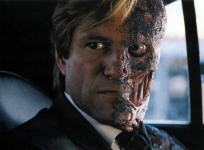
The “White Knight.” A man the city can trust when Batman hides in the shadows. Aaron Eckhart plays him with clean energy, every gesture upright and honest. When we first meet him, his words carry weight because he believes in them.
That belief makes his fall harder to watch. After the explosion that scars him, Dent becomes Two-Face, a man torn between justice and revenge. His coin flip becomes his new moral code. What was once order turns to chaos.
Dent’s journey mirrors the film’s argument that even the best can break.
His collapse completes the triangle between Batman’s restraint and Joker’s anarchy. In the end, Gotham loses its brightest light, and Batman takes the blame to keep that light untarnished.
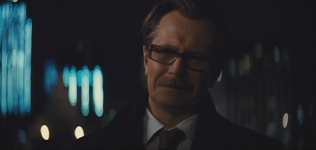
He is the cop who keeps his hands dirty and his conscience clean. Gary Oldman plays him as a man who tolerates compromise to protect something larger, the fragile rule of law. He walks a narrow line between duty and survival, and that restraint becomes its own kind of courage.
Gordon’s choices anchor the story.
He trusts Dent, he trusts Batman when others do not, and he carries the moral cost of those trusts. When the city needs a public hero, Gordon helps build that myth. When the truth would destroy the city, he keeps a secret and bears the burden. That quiet weight is why his scenes feel so necessary.
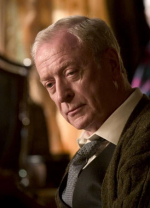
Michael Caine gives him warmth and gravity, the kind that steadies Bruce when the world pulls him apart. His lines are simple, delivered like advice that has already been tested by life. He reminds Bruce of limits, of decency, of the cost of obsession.
He is not a butler here so much as a conscience.
Alfred sees what Bruce risks losing in his fight for control. He pushes him toward balance, even when that means telling him hard truths. His presence keeps the story human. Without Alfred, Batman would drift into the same emptiness that swallows his enemies.
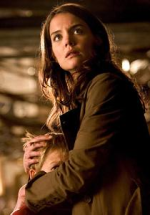
She is not a love interest for decoration. She has a job, convictions, and a clear idea of right and wrong. Maggie Gyllenhaal gives her quiet strength and moral clarity, the kind that highlights Bruce’s compromises and Dent’s idealism.
Her choices matter because they shift the stakes. Rachel’s fate becomes the hinge that breaks Dent and forces Bruce to make the kind of choice that defines the film. She reminds us the story is about people, not costumes.
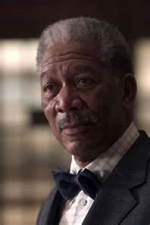
Morgan Freeman plays him with calm intelligence, the kind that makes every line feel like both wisdom and warning. He manages Wayne Enterprises by day and builds Batman’s tools by night. His inventions are the bridge between Bruce’s ideals and the real world of surveillance, weapons, and consequence.
Lucius represents ethics inside innovation.
He helps, but only as long as Bruce’s mission stays within moral limits. When Bruce crosses into invasive technology to track Gotham’s criminals, Lucius stands firm. He agrees to help once, then makes it clear he will leave afterward. That quiet defiance gives the story a final voice of conscience.
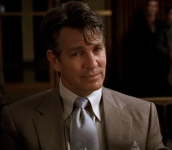
He is a man of rules, or at least his version of them. Eric Roberts plays him with the easy arrogance of someone who has survived too many political shifts to be afraid. His smile always suggests he knows something you don’t.
Maroni’s power rests on loyalty and fear. When Dent begins cleaning up the city, Maroni becomes one of his prime targets. That pressure drives him to back the Joker, believing chaos can serve business. He miscalculates. The Joker has no business plan, only destruction. By trusting him, Maroni signs away his control.
He is a reminder that Gotham’s evil didn’t start with painted faces or explosions.
It started with quiet deals, envelopes of cash, and people who believed crime could stay civilized. Maroni’s story fades before the final act, but his legacy lingers. His fall clears the way for a new breed of villain, one with no rules at all.
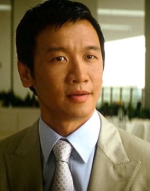
He keeps the money moving and the books clean. When Batman and Lucius trace the funds he runs to Hong Kong to hide.
Catching Lau turns the fight into procedure. It shows Batman working like an investigator, not a performer. Bringing him back exposes the mob and helps Dent build his case.
The Joker answers by burning the money and killing Lau. That act removes the comfortable rules Maroni relied on. It also proves the Joker will burn the whole system to watch it collapse.
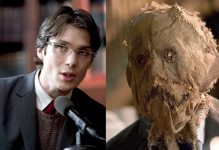
He is the ghost of Gotham’s past chaos, proof that the city’s sickness never really left. Cillian Murphy plays him with the same cold detachment as before, but here he is smaller, a faded threat in a world now ruled by larger madness.
Crane’s role reminds us that Gotham breeds villains as fast as Batman can fight them. His quick capture in the parking garage chase shows how far Batman has come since Batman Begins. Fear gas and theatrics no longer scare the city. It takes something new, something unpredictable—the Joker.
Even as a minor figure, Scarecrow adds texture to the story.
He connects Nolan’s trilogy threads and marks the shift from psychological terror to full-blown moral collapse. He is the echo that says, “This has happened before,” just before Gotham learns that this time, it will get worse.

Ledger prepared the role in a strange, intense way.
He spent about a month alone in a hotel reading comics and shaping a voice, then kept a "Joker diary" for months to build the character. Ledger later called the role the most fun he ever had, but also said the work left him wrecked.
His performance changed the conversation about what a comic-book villain could be. Critics and audiences agreed it felt like something new, a raw, unpredictable force that made Batman’s moral code feel fragile.
Ledger died in January 2008 while the film was being edited.
His scenes were already recorded, so Nolan kept the Joker’s story intact and added a dedication. The film and Ledger’s work then swept many awards, including a posthumous Academy Award for Best Supporting Actor. That win marked a turning point for genre films at awards season.
For many of us the memory is equal parts performance and mood.
The Joker was a shock you felt in your chest. The acting was three parts menace, one part mischief, and it made the movie feel urgent in a way few blockbusters had been before.
For many it is the ferry sequence. Two boats. A countdown. A moral test that felt personal in a way action rarely does. The tension was quiet, not loud. You listened to people choose, and that silence made the choice feel heavier.
The hospital explosion was another moment you could feel in your chest. It arrived without fanfare and then everything smelled like smoke for a beat. Nolan staged it on a set and filmed it so it landed as sudden and grotesque, not just loud.
Then there is the interrogation scene.
Two actors in a room. A single lamp. The theater went near silent. Ledger’s Joker pushed, baited, and the room leaned in with him. That sequence made the movie feel smaller and deeper at once.
Hans Zimmer and James Newton Howard built the mood into our bodies.
The score is a heartbeat and a knife. It does not let go. It made those scenes feel less like set pieces and more like gut-level experiences.
Those anchors are why we still remember lines and images years later. They are not just cool moments. They are memory magnets. They pull the rest of the film back into your head whenever you hear a single chord or see a smashed window.
They sat there in silence, faces still lit by the credits, trying to process what they’d seen. It wasn’t just a superhero film anymore. It was a story about choices, chaos, and the thin line between justice and obsession.
What made it stick was balance. Batman’s control against Joker’s chaos.
Dent’s hope against despair. Gordon’s honesty against necessity. Those contrasts still echo today whenever a new comic film tries to feel serious. Few ever match that mix of realism, danger, and heart.
For those who saw it on a big screen in 2008, the memories are physical. The shiver when the Joker appeared, the rumble of the Batpod, the sound of Zimmer’s low, tense hum. It was the kind of movie you didn’t just watch, you experienced.
Years later, The Dark Knight still feels alive. Gotham’s skyline remains in our minds, half real, half dream. It’s a reminder that cinema can hit like thunder and still ask you hard questions when the lights come up.
What are your memories of The Dark Knight? Post on comments below.
You could feel the air change when the Warner Bros. logo faded and the screen turned that cold blue. The Dark Knight was more than a summer movie, it was an event. The crowd fell quiet before the first line. Then the bank heist started and the room held its breath.

Back then superhero films were mostly loud, fun, and a little silly.
Christopher Nolan did something different. He took out the jokes, leaned into grit, and gave us a Batman that felt lived in and dangerous. That then versus now split still stings. Before The Dark Knight, comic book movies were primarily popcorn. After it, people started talking about them like serious cinema.
It mattered because of how we watched it.
We lined up at midnight. We traded rumors in the lobby. We left the theater talking in that low, stunned way you do after you have just seen something that sticks. Heath Ledger’s Joker gave us a chill we didn’t expect. Hans Zimmer’s score vibrated in our chests. The Batpod sounded like thunder rolling past a quiet street.
This piece is a walk-through of those moments. Memory first, facts close behind. If you remember where you were when Gotham went dark, you already know why.
Background of The Dark Knight and the Midnight Premiere
It started like an urban campout.Lines wrapped around theater corners, people clutching sodas and talking about the trailer they’d watched a hundred times on YouTube. You could hear that low hum of excitement that only happens before a movie everyone knows is about to change things.

When the lights dimmed and the Warner Bros. logo shimmered across the screen, the chatter died fast. That deep hum from Hans Zimmer’s score rolled through the room like thunder building somewhere behind you.
The opening scene hit hard. A perfect blue skyline, masked robbers, the slow pullback that showed Gotham wasn’t just a city—it was a world. You could almost feel the cool of the IMAX air as the first window shattered.
This was July 2008, when midnight premieres felt like mini-festivals. Fans showed up in makeshift Batman cowls or smeared white face paint. Everyone knew Heath Ledger’s Joker was waiting somewhere in the dark, and no one was ready for how chilling that first “Whatever doesn’t kill you…” line would sound in surround sound.
That weekend broke records. Over 9,000 screens lit up with Gotham’s chaos, and The Dark Knight took in more than $158 million in three days. But for most of us, the number didn’t matter.
What stayed was the silence right after the credits rolled, when everyone just sat there, trying to take in what they’d seen.
The Craft, Scale, and Nolan’s Realism
From the first frame you knew Nolan wanted reality. Gotham looked like a city you could walk through. The streets felt lived in. The buildings had weight.Nolan used IMAX cameras to make scale feel immediate.
Scenes did not float on a digital sky. The bank, the rooftops, the Batpod chase all felt tactile. You leaned into the screen because the film pulled you forward.
Most stunts were practical. The truck flipped for real. The hospital explosion was built on a set. That made danger feel physical, not virtual. You could almost smell the smoke and hear metal bending.
Nolan filmed on location in Chicago and Hong Kong.
The real streets gave the film texture. Light and shadow did the work CGI usually does. The result was a Batman movie that felt like a crime drama, raw and close.
The Dark Knight Characters That Made the Show Awesome
Batman (Bruce Wayne)
Bruce is quiet strength. A billionaire who learned to fight after his parents were killed.
In Nolan’s script he is steady rather than changing, the anchor to a story built around Harvey Dent and the Joker. That stillness makes his choices heavier. Here Batman is less comic-book symbol and more a worn, tactical presence who carries the city’s moral weight.
Nolan’s Batman is closer to the grim, methodical detective from 1980s comics than to the theatrical 1989 Keaton-era caped showman. He is also less a tragic origin story than the brooding action figure Christian Bale played in Batman Begins.
That comparison helps explain why the film feels like crime drama first and superhero movie second.
Joker.
Heath Ledger turned the Joker into a living itch in the room.
Photo Credit: Wikipedia
He built the voice and the posture in a month of isolation and kept a “Joker diary” to shape the character, giving the role an improvisatory edge that felt spontaneous on screen.
Ledger drew on chaotic, punk influences and on unsettling screen villains to shape a figure who was equal parts prank and pure threat. His performance shifted how we thought about cinematic villains, making the Joker less a comic-book spectacle and more an unpredictable force that tests other characters’ morals.
Ledger died while the film was in post production, and his work was honored with a posthumous Academy Award and other major prizes.
Harvey Dent
Harvey Dent begins as Gotham’s hope.
The “White Knight.” A man the city can trust when Batman hides in the shadows. Aaron Eckhart plays him with clean energy, every gesture upright and honest. When we first meet him, his words carry weight because he believes in them.
That belief makes his fall harder to watch. After the explosion that scars him, Dent becomes Two-Face, a man torn between justice and revenge. His coin flip becomes his new moral code. What was once order turns to chaos.
Dent’s journey mirrors the film’s argument that even the best can break.
His collapse completes the triangle between Batman’s restraint and Joker’s anarchy. In the end, Gotham loses its brightest light, and Batman takes the blame to keep that light untarnished.
James Gordon
James Gordon is steadiness in a chaotic city.
He is the cop who keeps his hands dirty and his conscience clean. Gary Oldman plays him as a man who tolerates compromise to protect something larger, the fragile rule of law. He walks a narrow line between duty and survival, and that restraint becomes its own kind of courage.
Gordon’s choices anchor the story.
He trusts Dent, he trusts Batman when others do not, and he carries the moral cost of those trusts. When the city needs a public hero, Gordon helps build that myth. When the truth would destroy the city, he keeps a secret and bears the burden. That quiet weight is why his scenes feel so necessary.
Alfred Pennyworth
Alfred is the calm inside Gotham’s storm.
Michael Caine gives him warmth and gravity, the kind that steadies Bruce when the world pulls him apart. His lines are simple, delivered like advice that has already been tested by life. He reminds Bruce of limits, of decency, of the cost of obsession.
He is not a butler here so much as a conscience.
Alfred sees what Bruce risks losing in his fight for control. He pushes him toward balance, even when that means telling him hard truths. His presence keeps the story human. Without Alfred, Batman would drift into the same emptiness that swallows his enemies.
Rachel Dawes
Rachel is the human anchor in Bruce Wayne’s life.
She is not a love interest for decoration. She has a job, convictions, and a clear idea of right and wrong. Maggie Gyllenhaal gives her quiet strength and moral clarity, the kind that highlights Bruce’s compromises and Dent’s idealism.
Her choices matter because they shift the stakes. Rachel’s fate becomes the hinge that breaks Dent and forces Bruce to make the kind of choice that defines the film. She reminds us the story is about people, not costumes.
Lucius Fox
Lucius Fox is the mind behind Batman’s machinery.
Morgan Freeman plays him with calm intelligence, the kind that makes every line feel like both wisdom and warning. He manages Wayne Enterprises by day and builds Batman’s tools by night. His inventions are the bridge between Bruce’s ideals and the real world of surveillance, weapons, and consequence.
Lucius represents ethics inside innovation.
He helps, but only as long as Bruce’s mission stays within moral limits. When Bruce crosses into invasive technology to track Gotham’s criminals, Lucius stands firm. He agrees to help once, then makes it clear he will leave afterward. That quiet defiance gives the story a final voice of conscience.
Sal Maroni
Sal Maroni represents Gotham’s criminal tradition before the Joker arrived to tear it apart.
He is a man of rules, or at least his version of them. Eric Roberts plays him with the easy arrogance of someone who has survived too many political shifts to be afraid. His smile always suggests he knows something you don’t.
Maroni’s power rests on loyalty and fear. When Dent begins cleaning up the city, Maroni becomes one of his prime targets. That pressure drives him to back the Joker, believing chaos can serve business. He miscalculates. The Joker has no business plan, only destruction. By trusting him, Maroni signs away his control.
He is a reminder that Gotham’s evil didn’t start with painted faces or explosions.
It started with quiet deals, envelopes of cash, and people who believed crime could stay civilized. Maroni’s story fades before the final act, but his legacy lingers. His fall clears the way for a new breed of villain, one with no rules at all.
Lau
Lau is the mob’s invisible hand.
He keeps the money moving and the books clean. When Batman and Lucius trace the funds he runs to Hong Kong to hide.
Catching Lau turns the fight into procedure. It shows Batman working like an investigator, not a performer. Bringing him back exposes the mob and helps Dent build his case.
The Joker answers by burning the money and killing Lau. That act removes the comfortable rules Maroni relied on. It also proves the Joker will burn the whole system to watch it collapse.
Scarecrow (Dr. Jonathan Crane)
Dr. Jonathan Crane reappears briefly at the start of The Dark Knight, but his cameo serves a purpose.
He is the ghost of Gotham’s past chaos, proof that the city’s sickness never really left. Cillian Murphy plays him with the same cold detachment as before, but here he is smaller, a faded threat in a world now ruled by larger madness.
Crane’s role reminds us that Gotham breeds villains as fast as Batman can fight them. His quick capture in the parking garage chase shows how far Batman has come since Batman Begins. Fear gas and theatrics no longer scare the city. It takes something new, something unpredictable—the Joker.
Even as a minor figure, Scarecrow adds texture to the story.
He connects Nolan’s trilogy threads and marks the shift from psychological terror to full-blown moral collapse. He is the echo that says, “This has happened before,” just before Gotham learns that this time, it will get worse.

The Joker, Heath Ledger, and the Performance Everyone Talked About
The first time the Joker showed up on screen you felt it. The room went still. People leaned forward like someone had called their name. That unease stuck with us long after we left the theater.Ledger prepared the role in a strange, intense way.
He spent about a month alone in a hotel reading comics and shaping a voice, then kept a "Joker diary" for months to build the character. Ledger later called the role the most fun he ever had, but also said the work left him wrecked.
His performance changed the conversation about what a comic-book villain could be. Critics and audiences agreed it felt like something new, a raw, unpredictable force that made Batman’s moral code feel fragile.
Ledger died in January 2008 while the film was being edited.
His scenes were already recorded, so Nolan kept the Joker’s story intact and added a dedication. The film and Ledger’s work then swept many awards, including a posthumous Academy Award for Best Supporting Actor. That win marked a turning point for genre films at awards season.
For many of us the memory is equal parts performance and mood.
The Joker was a shock you felt in your chest. The acting was three parts menace, one part mischief, and it made the movie feel urgent in a way few blockbusters had been before.
Memorable Scenes of The Dark Knight
Which scene still stops you cold?For many it is the ferry sequence. Two boats. A countdown. A moral test that felt personal in a way action rarely does. The tension was quiet, not loud. You listened to people choose, and that silence made the choice feel heavier.
The hospital explosion was another moment you could feel in your chest. It arrived without fanfare and then everything smelled like smoke for a beat. Nolan staged it on a set and filmed it so it landed as sudden and grotesque, not just loud.
Then there is the interrogation scene.
Two actors in a room. A single lamp. The theater went near silent. Ledger’s Joker pushed, baited, and the room leaned in with him. That sequence made the movie feel smaller and deeper at once.
Hans Zimmer and James Newton Howard built the mood into our bodies.
The score is a heartbeat and a knife. It does not let go. It made those scenes feel less like set pieces and more like gut-level experiences.
Those anchors are why we still remember lines and images years later. They are not just cool moments. They are memory magnets. They pull the rest of the film back into your head whenever you hear a single chord or see a smashed window.
Gotham Remembered
When The Dark Knight ended, people didn’t rush out of their seats.They sat there in silence, faces still lit by the credits, trying to process what they’d seen. It wasn’t just a superhero film anymore. It was a story about choices, chaos, and the thin line between justice and obsession.
What made it stick was balance. Batman’s control against Joker’s chaos.
Dent’s hope against despair. Gordon’s honesty against necessity. Those contrasts still echo today whenever a new comic film tries to feel serious. Few ever match that mix of realism, danger, and heart.
For those who saw it on a big screen in 2008, the memories are physical. The shiver when the Joker appeared, the rumble of the Batpod, the sound of Zimmer’s low, tense hum. It was the kind of movie you didn’t just watch, you experienced.
Years later, The Dark Knight still feels alive. Gotham’s skyline remains in our minds, half real, half dream. It’s a reminder that cinema can hit like thunder and still ask you hard questions when the lights come up.
What are your memories of The Dark Knight? Post on comments below.



